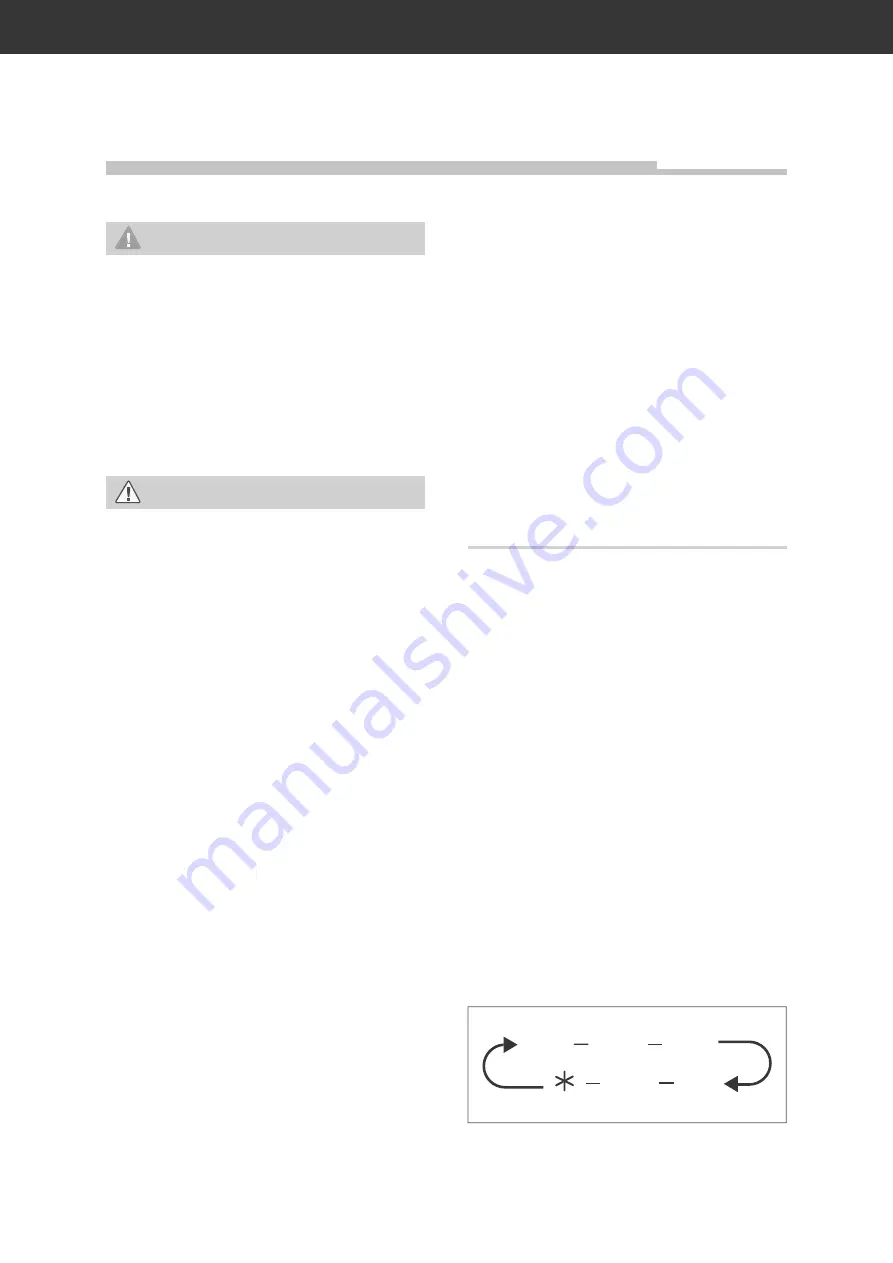
Optional: Using the appliance as a refrigerator
WARNING
Danger of explosion!
Improper handling of the appliance
can lead to explosions.
■
Do not store explosive substances or
spray cans with fl ammable propel-
lants inside the appliance, as they
may cause ignitable gas-air mixtures
to explode.
CAUTION
Health hazard!
Contaminated food can cause health
problems.
■
Opening the door for long periods can
cause a signifi cant increase of the
temperature in the compartments of
the appliance.
■
Clean regularly surfaces that can
come in contact with food and acces-
sible drainage systems.
■
Store raw meat and fi sh in suitable
containers in the refrigerator, so that
it does not come into contact with or
drip onto other food.
■
If the refrigerating appliance is left
empty for long periods, switch off,
defrost, clean, dry, and leave the door
open to prevent mould developing
within the appliance.
Health hazard!
Incorrect handling, insuffi cient cool-
ing or overlapping items can spoil the
stored food. This could lead to a risk of
food poisoning when consumed!
■
In particular, pack raw meat and fi sh
carefully to ensure that adjacent
food cannot be contaminated by sal-
monella or similar bacteria.
■
Abide by the storage times recom-
mended by food manufacturers.
■
In case of prolonged power failure or
malfunction of the appliance, remove
the stored frozen food from the appli-
ance and keep it in a suffi ciently cool
place or in another refrigerating ap-
pliance. The maximum storage time
in the event of a fault is shown on the
appliance’s type plate.
■
After a malfunction, check whether
the stored food is still edible.
The following tips show you how you can
store foods in your appliance to keep them in
the best possible condition over the longest
possible period. They will help prevent food
from being wasted.
Set the temperature in the fridge to +6 °C and
fill the fridge such that the temperature condi-
tions inside are optimally utilised, guarantee-
ing optimal food storage.
Setting the cooling
temperature
The temperature range for the cooling mode
is b8 °C and +2 °C. The ideal cool-
ing mode temperature is +6 °C.
A temperature setting that is too high or too
low can reduce the shelf life of your food. This
leads to greater food waste.
8°C
6°C
4°C
3°C
2°C
Optional: Using the appliance as a refrigerator
Page EN-19
















































